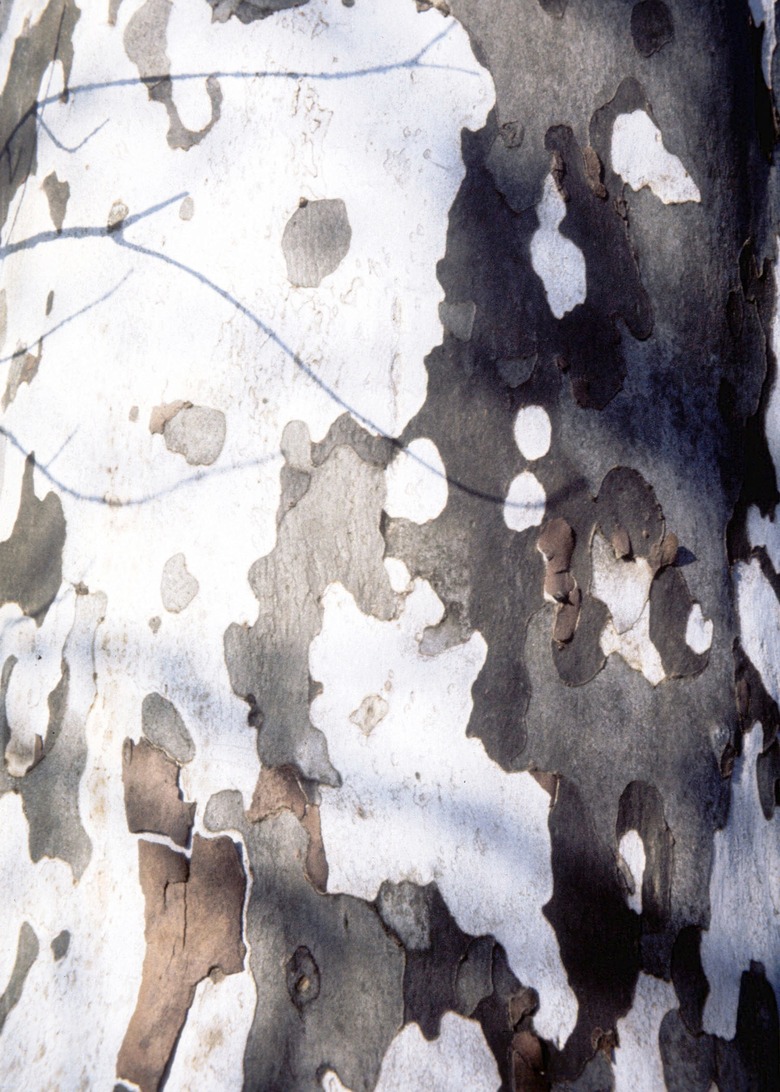How Deep Is The Root System Of A Sycamore Tree?
If you're planning to add a large tree to your garden, understanding the growth habits of the possible choices can help you choose the best tree for your needs. For a majestic tree that provides lots of deep shade, it's hard to beat the sycamore tree (Platanus occidentalis), which spreads densely and reaches heights of 75 to 100 feet when mature. Because some of this tree's roots are relatively shallow, choosing the best planting site and preparing your soil properly can be critical for success.
Characteristics
Step 1
The sycamore tree grows in U.S. Department of Agriculture plant hardiness zones 4 through 9. It develops with a single trunk, or dominant leader, with secondary branches growing at intervals along the trunk, and has a symmetrical canopy with a regular outline that provides dense shade. The sycamore is a quick-growing tree that adds about 1 or 2 feet to its height each year. In spring, it has reddish but inconspicuous flowers, followed by small, fuzzy brown fruits, and has foliage that usually turns uniformly yellow in autumn.
- If you're planning to add a large tree to your garden, understanding the growth habits of the possible choices can help you choose the best tree for your needs.
- For a majestic tree that provides lots of deep shade, it's hard to beat the sycamore tree (Platanus occidentalis), which spreads densely and reaches heights of 75 to 100 feet when mature.
Roots
Step 1
Like most deciduous trees, a young sycamore develops a long tap root during its first year or two, but it adds many more roots, called feeder roots, as it grows. Most full-grown trees have a relatively shallow but widely spread root system, with 80 to 90 percent of the roots in the top 2 feet of soil. The sycamore tree tends to have an especially large concentration of shallow roots in the top layer of soil. These shallow roots can enlarge sufficiently to raise or lift sidewalks or other paved surfaces and to interfere with mowing of the surrounding lawn.
Site Selection
Step 1
The sycamore is an exceptionally tough tree that's adaptable to both full sun and partial shade, although it grows best in a spot that gets bright sun for part of each day. Because of its large size, it requires a location where it can spread freely without interfering with other plantings. The sycamore tree should be planted at least 12 feet from sidewalks, patios and other paved areas. Its shallow root system and dense shade can also make it difficult to establish a lawn in the nearby area, so it's best suited to a naturalized or widely mulched area.
- Like most deciduous trees, a young sycamore develops a long tap root during its first year or two, but it adds many more roots, called feeder roots, as it grows.
- The sycamore is an exceptionally tough tree that's adaptable to both full sun and partial shade, although it grows best in a spot that gets bright sun for part of each day.
Roots and Soil
Step 1
Although the sycamore tree produces an abundance of shallow roots, planting it in the proper type of soil can help promote downward root growth. Choosing a site where soil isn't compacted or rich in clay, allowing water to drain away freely, can help roots grow deeply. If your soil is high in clay, you can add sand at planting to loosen it and improve its drainage. Soil that's fertile and organically rich can also help promote deep root growth, so adding compost at planting and intervals as the tree grows can also be helpful. Drought can promote shallow roots, but watering a tree deeply during dry spells can help counteract this tendency and promote deep roots.
